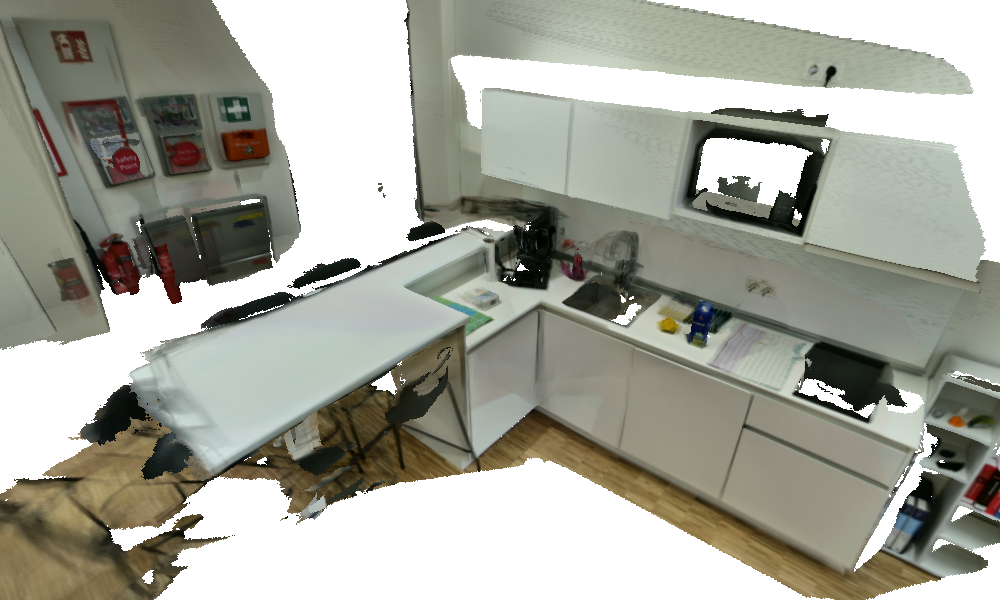Supervisor: Christian Rauch;
Univ.-Prof. Dr Elmar Rückert
Start date: April 2025
Theoretical difficulty: mid
Practical difficulty: low
Abstract

Vision-Language Models (VLMs) are novel methods that can related image information and text via a common embedding space. But these methods, trained on 2D image data, can only operate on the current view point of a camera.
On the other hand, neural rendering techniques, such as NeRF [1] or 3D Gaussian Splatting [2], enable compressing multiple image views into a highly detailed representation, which is useful for novel view synthesis in SLAM approaches.
Related work, such as LERF [3] and LangSplat [4] are combining these two approaches to create a compressed 3D representation of these vision-language embeddings, but are far from real-time capable, and usually do not provide a representation in metric space, making them unsuitable for robotic applications.
Tentative Work Plan
To achieve the objectives, the following concrete tasks will be focused on:
- Backgrounds and Setup:
- identify sensors for (RGB-D) data collection
- review related work in the domain of VLMs and neural rendering methods
- identify useful reference implementations
- Real-Time neural rendering approach:
- identify or implement a method for real-time localisation and mapping that can operate on a live sensor data stream (e.g. from a camera or ROS bag)
- Integrate Vision-Language embeddings into the map:
- based on related work, develop a method to integrate embeddings into the live reconstruction
- provide a way to introspect or query this representation via text in real-time
- PoC implementation:
- implement a ROS 2 wrapper around the proposed method that can operate on a live stream of colour and depth images from a robot-mounted camera
- collect evaluation sequences on a mobile robot platform (e.g. Uniguide) in varying environment, fallback alternative: use the camera in a hand-held setting
- Evaluation:
- evaluate the reconstruction of the embeddings with state-of-the-art approaches
- evaluate the real-time capabilities of the method against baseline approaches

